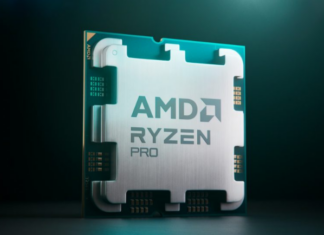The PC industry expects notebooks and desktops with native artificial intelligence capabilities to capture the market. But for Microsoft, a computer needs to have at least 40 TOPS to be an AI PC, as the idea has been called. Translation: a machine of this type must have a lot of performance.
But what is an AI PC?
AI PC is a business term that identifies a computer whose hardware is optimized to perform artificial intelligence (AI) tasks locally, without relying on external servers to generate satisfactory results.
Tools like ChatGPT, Google Gemini, and Microsoft Copilot have made AI popular in recent months, even though the concept has been around for decades. However, all of these services process user requests in the clouds, so they rely on internet connections in their default mode of operation.
As the Windows platform has been progressively integrated with AI features, it is to be expected that at least part of these tasks will be performed satisfactorily by the user’s own computer. That’s where the idea of the AI PC makes sense.
To meet (or create) this category, manufacturers are betting on notebooks or desktops whose CPUs have an integrated neural processing unit (NPU), such as the current Intel Core Ultra chips with Meteor Lake architecture.
Microsoft talks about 40 TOPS performance
In early 2024, information surfaced that Microsoft would require an NPU with a performance of at least 40 TOPS for local execution of Copilot on Windows. Tom’s Hardware reports that this requirement was only confirmed by the company at the end of March, during the Intel AI Summit event.
TOPs are a parameter used to give a sense of the power of an NPU. Each TOP corresponds to one trillion operations per second. Therefore, the greater the number of TOPS, the more performance the NPU has.
The problem is that reaching the top 40 is not easy. The aforementioned Core Ultra Meteor Lake line is made up of powerful chips, and yet they reach up to 34 TOPS, which is why even they don’t meet the Copilot requirements.
It’s not that Microsoft is being picky. The 40 TOPS reported by the company were defined based on what it takes to run Copilot locally on Windows 11 without an overall drop in performance or poor results.
The AI PC hasn’t come yet, but it promises to come
It is even possible to complement the execution of Copilot on Windows using the GPU, but Microsoft has prioritized the use of the NPU for this purpose in order to avoid harming the battery life of notebooks.
This means that, based on the hardware currently available, the AI PC proposition is not a reality. Not to run Copilot on Windows in fully local mode. On early computers based on the concept, Microsoft’s artificial intelligence must still rely on clouds.
But the situation may change in the near future. With software optimizations and better-prepared hardware, the AI PC could become feasible as early as 2024 or 2025.
Just take into account that Lunar Lake, the next generation of Intel Core chips, is expected to be announced this year with an NPU three times more powerful than the current one. AMD and Qualcomm are also already preparing to serve the segment with powerful NPUs.
For the record, other requirements for a computer to be considered an AI PC include a physical button for Copilot and, of course, having this artificial intelligence tool enabled.










